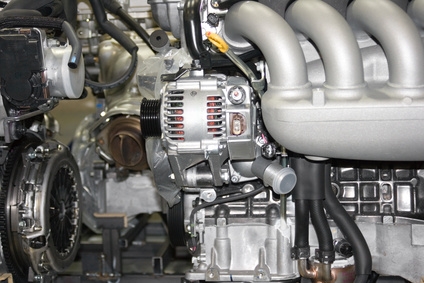
Without the assistance of an alternator, the battery system in any machine would constantly drain itself and over time lose the ability to charge up electrical systems. Brushless alternators were created to reduce friction and heat in mechanical applications, mainly wind turbines. The components in a brushless alternator consist of two smaller alternators, one called the main alternator and the other called an exciter. These two work together to function as one alternator.
There several parts that are needed in order for a brushless alternator to function properly: the alternator, alternator shaft, exciter, coils, armature and voltage regulator. All of these parts are needed to create and maintain a consistent current to create power.
There are two variations of the brushless alternator, residual magnetics or permanent magnetism. The only difference between the two variations is the method of which the exciter is magnetized. Residual magnets are not stationary, while permanent magnetism is exactly that, permanent.
Brushless alternators can significantly reduce heat and friction in any application. Lower operating temperatures result in less wear and tear and longevity of the mechanical parts. Brushless alternators are also quieter while operating than standard brushed alternators.
A brushless alternator functions by moving a coil through a magnetic field, generating electricity. The coils are charged with protons and electrons as it moves through the field. As these molecules collect, electrical current is generated and the electrons are sent through the coil and into wires of the alternator. The wires are connected to the electrical control system and ultimately to the battery of the machine.
There are several options available when choosing a brushless alternator. Depending on the application and the amount of power necessary, these alternators are available in single or multi-phase applications. The number of phases an alternator comes equipped with determines the amount of current it can provide. A one phase alternator, also known as a single phase is not as powerful as a dual phase alternator.